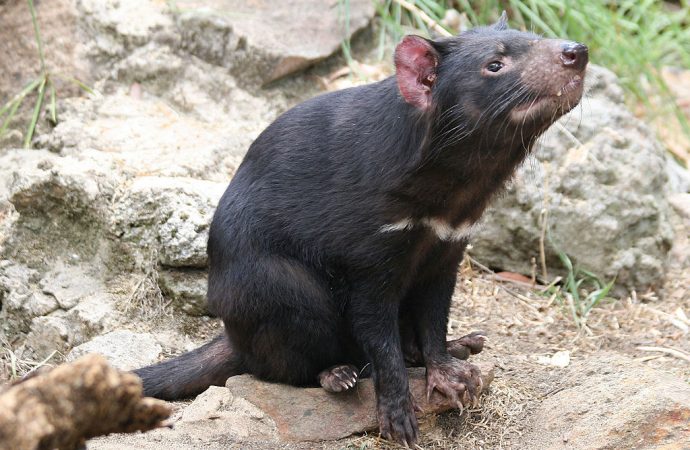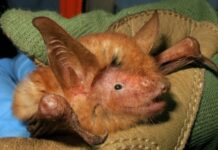Contagious cancers are uncommon; tumour cells rarely go around jumping from one individual to the other. Unless that individual is a Tasmanian Devil – the unfortunate animal is hit not by one, but by two forms of the Devil Facial Tumour Disease (DFTD1 and DFTD2). Tumour cells leap between Tasmanian Devils when they bite each other during territorial or sexual disputes. The cancer cells spread quickly and ruthlessly; after the first signs of the disease (the Tasmanian Devil’s faces grow lumps and their eyes and mouths can no longer stay open), individuals are left with less than six months to live.
The DFTD1 is highly contagious and has been first discovered in 1996. The DFTD2 is less pathogenic and has been identified four years ago. Victoria Hansen and Robert Miller pose, in a recent Insight article for the journal E-Life, a burning question: “If one transmissible cancer in a species may be unfortunate, what is going on that the Tasmanian Devil may have two?” Hansen and Miller go on to discuss the impact of the loss of the Tasmanian Devils’ habitat and to discuss the mechanisms by which DFTD2 escapes the immune systems’ traps.
Further reading:
[wp-svg-icons icon=”pencil-2″ wrap=”span”] Contagious Cancers: A ‘devil’ of a problem by Victoria Hansen and Robert Miller (Insight Article)
[wp-svg-icons icon=”pencil-2″ wrap=”span”] The newly-arisen Devil facial tumour disease 2 (DFT2) reveals a mechanism for the emergence of a contagious cancer; Caldwell, A.; et al (Open Access Research Article)
Image By Mike Lehmann, Mike Switzerland 09:52, 28 February 2007 (UTC) [GFDL, CC-BY-SA-3.0 or CC BY-SA 2.5 ], from Wikimedia Commons





